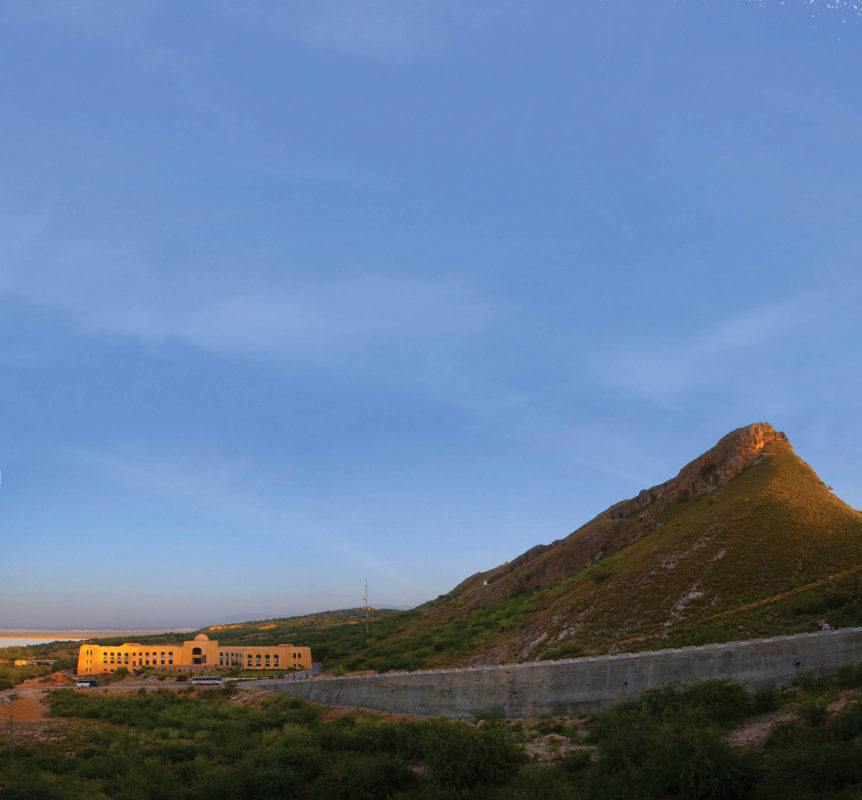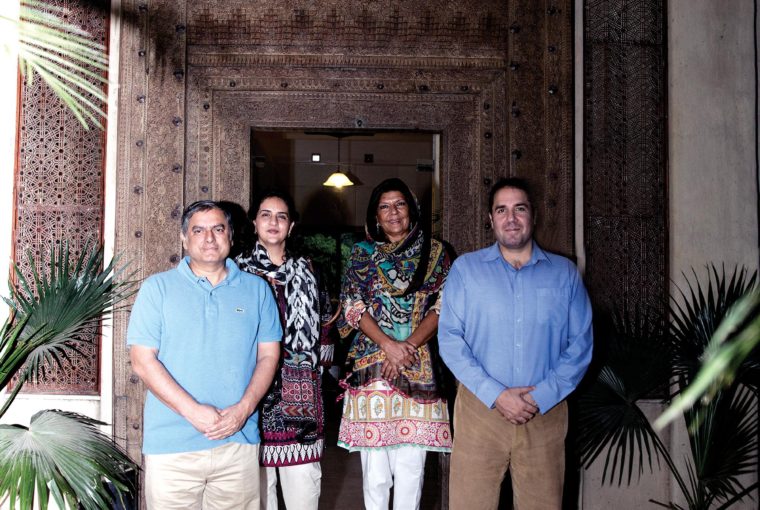Lahore-Islamabad Motorway – the road many a city dweller takes in search of scenic mountain views up north. What you probably don’t know, however, is that a little detour off the motorway near the Salt Range, right in the heart of Punjab, will lead you to a picturesque little valley surrounded by mountains that can easily rival the peaks of the northern areas. This is the Namal Valley, near Mianwali, and apart from its stunning natural landscape, it also boasts of an impressive man-made institution – the Namal College, a state-of-the art educational facility that aims to provide quality education to Pakistan’s substantial rural population.

Aleema Khan, a member of the college board, explained the vision behind the educational institution. Set up by her brother and PTI Chairman Imran Khan in 2008, it quickly expanded from providing only short courses to the nearby communities into a full-fledged university offering undergraduate programmes in Computer Sciences and Electrical Engineering.
“The real vision for Namal is far ahead of its time – to set up a Knowledge City that consists of six different schools, faculty and student residences, research facilities, a library, sports complex etc.,” she explains.
While she stresses that the college is open to students from all backgrounds, 90% of the young men and women who form the current study body come from low-income households and receive financial aid. Khan explains why that’s so:
“For many rural families, the cost of a simple admissions test can act as a deterrent to putting their children into colleges and universities. By removing this barrier, we have managed to attract a diverse body of students from across 56 districts of Pakistan and are providing them quality higher education.”
What makes Namal a real centre for change is the fact that contrary to the common practice of establishing universities in urban centres, it has brought educational facilities to a previously under-developed region, and is working towards creating an entire rural economy based around the Knowledge City. In the bargain, students from surrounding districts have the chance to experience world-class education.
The college is affiliated with the University of Bradford and offers the same courses as those available at the UK University. It also runs regular exchange programmes with its partner university, providing its students valuable international exposure and an enriching personal and academic experience. Khan speaks proudly of a Namal student hailing from Attock who spent a few weeks at Bradford recently and outshone others who came from much more privileged backgrounds.
Visitors to Namal, and there are many, both local and foreign, are charmed not only by the stunning natural beauty of the valley but also the positive relationship its students share with their surrounding community and environment. Every evening, a number of them gather a group of village children from around the area and teach them basic English and Math. Some conduct yoga classes. And there are others who grow vegetables, rear poultry and run a dairy farm in an effort to make the college self-sustaining.
“We are inculcating in our students a desire to give back to the college and the community. The idea is that eventually Namal will have a self-sustaining model run entirely by the students themselves,” stresses Khan. In the same vein, she also explains that special care is being taken to preserve the natural environment, including the neighbouring lake.
“There is so much beauty here. Not many know about the sulphur springs that exist in Namal. We want to foster eco-tourism around its natural landscape and not only encourage people to visit but also give our students yet another reason to be proud of their country and all that it has to offer.”
For patrons of Namal, their pride stems from the fact that the college is a much-needed stepping-stone for a large rural population towards improved career and lifestyle prospects. Access to higher education can be the key determinant of an individual’s, a community’s and indeed a country’s chance to unlock their true potential and Namal is providing exactly that opportunity.
Nurturing Nature at Namal
Namal’s founders have taken special care to build the college in a manner that respects the spectacular landscape around it. Omar Hassan, the architect responsible for the current works underway, which include the construction of a road that connects the vast area as well as a new college wing, explains how.
“In order not to take away from the raw natural beauty of the area, we have had to discover spaces within the landscape where the buildings can be nestled unobtrusively. Special care has been taken not to disrupt the natural flow of water from the lake. The entire focus is on trying to create a symbiotic relationship between the architecture and the environment, so that the building complements rather than overwhelms, yet retains its functionality.”
While such an environmentally friendly approach may sound like a modern concept to many, Hassan stresses on the fact that the idea is firmly rooted in the past and within the history of our land. “Civilizations such as Harappa and Moenjodaro set up cities in a manner that not only respected their surroundings but were also particular to the climate and environment. We’re looking at the past and using new technology to give it shape.”
Care has been taken to use indigenous materials and employ labour from around the area as much as possible, in order to create a sense of ownership within the rural community while creating long-term sustainability. But while the hands that are building the college might be local, Namal’s founders have ensured that the best creative minds from around the world have been consulted in designing the project. Be it the legendary British architect Lord Foster or the recently deceased visionary Zaha Hadid, experts from around the world have been involved in the creation of this mega-project.
Hassan likens the Knowledge City to Chandigarh in India, considered by many to be the best example of modern architecture and planning. “The city, once its completed, is set to redefine urbanization as we know it,” he concludes.





